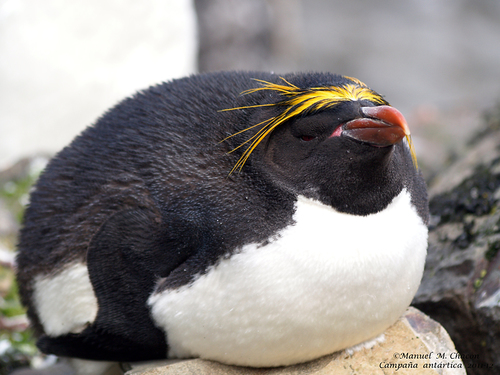
Macaroni Penguin
The Macaroni Penguin, with its striking yellow crests and bold black-and-white plumage, is a vibrant resident of sub-Antarctic islands. Renowned for their bustling colonies, these social birds are vital in marine ecosystems, thriving on krill and small marine life. A true spectacle of the Southern Ocean!
15-20 years
Lifespan
3.2 - 6.4 kg
Weight
Brown, Yellow, Black, White
Color
22 mph
Top Speed
Vulnerable
Conservation Status
Decreasing
Population Trend
Characteristics
Eudyptes chrysolophus, commonly known as the Macaroni Penguin, is distinguished by its vivid yellow-orange crest feathers and robust, black-and-white plumage. Found primarily on sub-Antarctic islands, these penguins are social breeders, nesting in large, noisy colonies. They primarily feed on krill, squid, and small fish, playing a crucial role in the marine food web.
Distribution Range of the Macaroni Penguin
Eudyptes chrysolophus, commonly known as the macaroni penguin, is native to the sub-Antarctic regions. Its geographical distribution includes the Southern Ocean and islands surrounding Antarctica, particularly in the South Atlantic and Indian Oceans. Key locations include South Georgia, the South Sandwich Islands, the Crozet Islands, and the Kerguelen Islands, with smaller populations on the Falkland Islands and islands off the coast of Argentina and Chile.
Macaroni Penguin's Habitat
Environmental Conditions
Macaroni penguins inhabit rugged, rocky regions of sub-Antarctic islands. They are typically found in areas with steep cliffs and tussock grass, which provide protection from predators and harsh weather conditions. The climate in these regions is cold and windy, with temperatures ranging from -10°C to 10°C and frequent precipitation in the form of snow, sleet, and rain.
Ecological Niche
Macaroni penguins primarily feed on krill, small fish, and squid, playing a crucial role in the marine food web. They are excellent swimmers and rely on the ocean for feeding, spending a significant portion of their lives at sea. During the breeding season, they return to land, forming large, densely packed colonies where they nest and rear their young. Their ecological niche is characterized by their role as both a predator of small marine organisms and prey for larger marine animals such as seals and orcas.
Copyright @ Nature Style Limited. All Rights Reserved.
 English
English